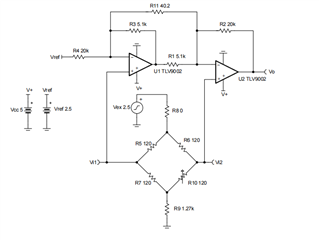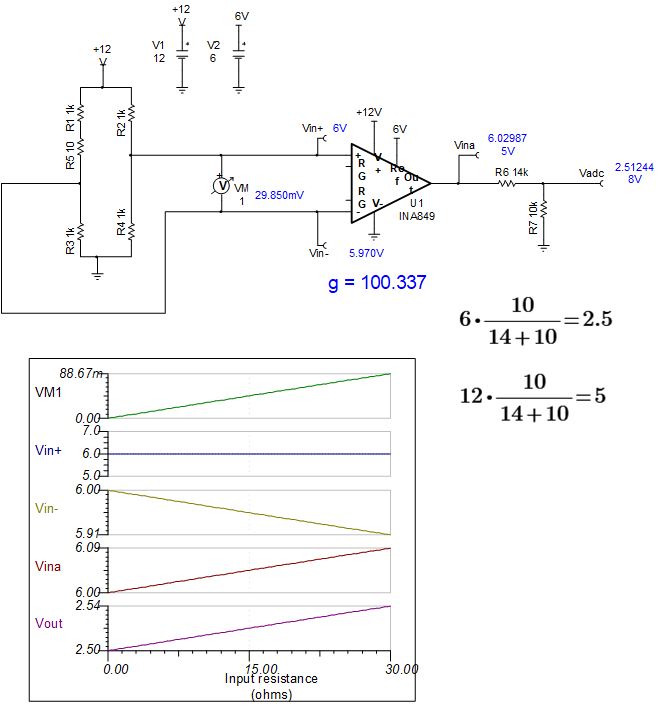Other Parts Discussed in Thread: INA849
Hi Team,
We are using ADS1220IRVAT in one of our projects.
The same is used for analyzing the pressure applied to a strain gauge.
The following is the setup used.
The Vout is connected to the AIN1 pin of the ADC.
The REFP0 pin is connected to a 5V reference voltage.
The excitation voltage of the strain gauge is 12V, the opamp is powered from a 12V suply.
Under balanced conditions, the voltage at the input of the ADC is 2.9V and when pressure is applied, the voltage may reach up to 4V.
When we open the circuit of the strain gauge, the voltage will reach up to 7V.
Will it affect the ADC?. I mean a high voltage at the input of the ADC pin.





